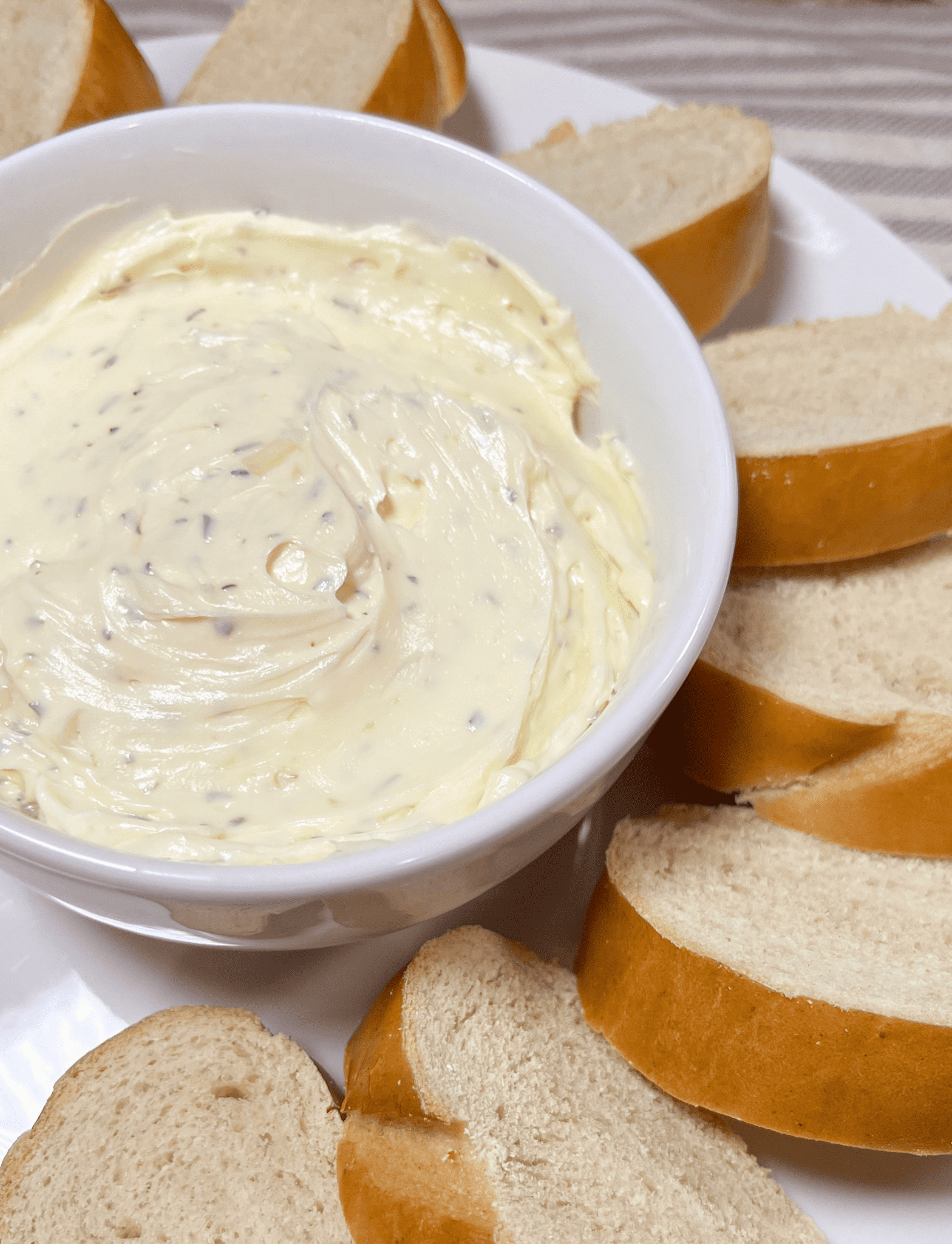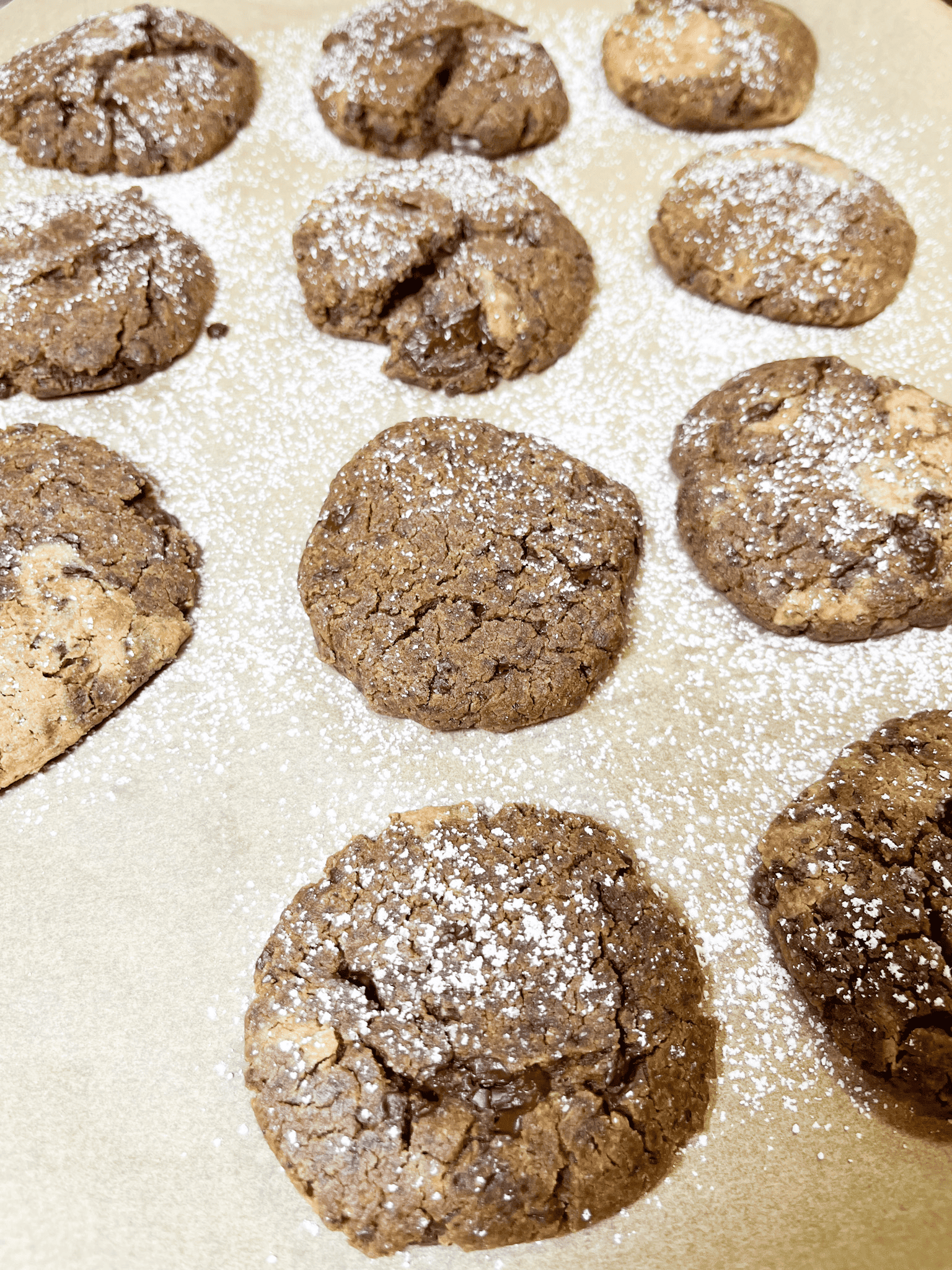Cranberry and Walnut Sourdough Bread Recipe
Introducing a sourdough bread recipe that combines the tartness of dried cranberries with the earthy crunch of walnuts, creating a loaf that’s not only visually stunning but also packed with flavor. This Cranberry Walnut Sourdough Bread recipe is perfect for beginners and seasoned bakers, offering a delightful twist on traditional sourdough. Whether you’re looking to impress at Thanksgiving dinner or simply want to enjoy a thick slice of warm bread on a cool day, this recipe is sure to become one of your favorites.
**This post contains affiliate links. We are a participant in the Amazon Services LLC Associates Program, an affiliate advertising program designed to provide a means for us to earn a small commission by linking to Amazon.com and affiliated websites.
Jump to RecipeIngredients Breakdown
Flour (3 cups)
This recipe benefits from a blend of all-purpose flour and whole wheat flour. The all-purpose flour provides a strong gluten network for a good rise and soft crumb, while whole wheat flour adds a hint of nuttiness and depth to the flavor.
Active Sourdough Starter (1/2 cup)
The heart of any sourdough recipe, the active starter, is crucial for leavening and flavor. Ensure your starter is fed and bubbly before you begin. This living culture not only helps the bread rise without the need for commercial yeast but also leaves a distinct tangy flavor that’s characteristic of sourdough bread.
Olive Oil (3 tbsp)
Olive oil is added to the dough to enrich its flavor and tenderize the crumb. It also helps in managing the dough’s hydration and makes handling the wet dough a bit easier. The subtle fruity notes of olive oil complement both the tanginess of the cranberries and the earthiness of the walnuts.
Lukewarm Water (1 cup)
Water activates the starter and hydrates the flour. Using lukewarm water (around 90°F or 32°C) is key as it’s warm enough to encourage yeast activity without damaging the starter. You may consider adding more water depending on the hydration of your starter.
Salt (2 tsp)
Salt is essential for flavor and also plays a role in strengthening gluten structure and regulating yeast activity. It balances the sweetness of the cranberries and enhances the overall taste of the bread.
Crushed Walnuts (1 cup)
Walnuts add a rich, nutty flavor and a delightful crunch to the bread. They pair beautifully with the tartness of the cranberries, offering a balanced taste and texture.
Dried Cranberries (1 cup)
Cranberries introduce a sweet and tart contrast to the savory bread. Their chewiness adds an interesting texture to each bite. You can adjust the amount based on personal preference or even soak them in warm water or orange juice for 10-15 minutes before adding to plump them up and enhance their flavor.
Supplies Needed
Large Bowl
A sizable mixing bowl is necessary to combine your ingredients and allow the dough to bulk ferment comfortably without overflowing.
Plastic Wrap or Damp Tea Towel
These are used to cover the dough during its rest and fermentation stages to prevent it from drying out.
Dutch Oven
Essential for baking the bread, a Dutch oven traps steam around the dough as it bakes, creating a moist environment that helps develop a crispy, golden crust.
Banneton Basket or Loaf Pan
If you’re aiming for a traditional round loaf, a banneton basket will give your bread a beautiful shape and pattern. Alternatively, a loaf pan lined with parchment paper can be used for a more conventional loaf shape.
Bench Scraper
The bench scraper is handy for handling and dividing the dough, especially when working with a wetter dough like sourdough.
Cooling Rack
Allows air to circulate around the freshly baked loaf, cooling it evenly and preventing the bottom from becoming soggy.
Parchment Paper
Used for easily transferring the dough into the hot Dutch oven and for lining pans if not using a banneton.
Sharp Knife or Razor Blade
For scoring the top of the dough just before baking, which helps control the expansion and contributes to the aesthetic of the finished loaf.

Detailed Instructions for Cranberry and Walnut Sourdough Bread
1. Mixing the Dough
- Start by placing 3 cups of a blend of all-purpose and whole wheat flour into a large bowl. To this, add 1/2 cup of your active sourdough starter. The starter should be at room temperature and bubbly, indicating that it’s ready to leaven your bread.
- Incorporate 3 tablespoons of olive oil into the mixture. Olive oil not only adds flavor but also contributes to a tender crumb. Then, slowly add 1 cup of lukewarm water while stirring to combine all the ingredients into a shaggy dough. This initial mix doesn’t need to be perfect, but aim for a uniform hydration of the flour.
2. Autolyse and Adding Flavor
- Let the dough rest, covered with plastic wrap or a damp tea towel, for about 30 minutes. This rest period, known as autolyse, allows the flour to fully absorb the water, beginning gluten development without any effort.
- After the dough has rested, add 2 teaspoons of salt, 1 cup of crushed walnuts, and 1 cup of dried cranberries. If desired, a tablespoon of fresh orange zest can also be added at this stage for an extra burst of flavor. Gently fold these ingredients into the dough, ensuring they’re evenly distributed.
3. Bulk Fermentation
- Cover the dough again and let it undergo the bulk fermentation process at room temperature. This is when the dough rises and develops its flavor and structure. During the first 2 hours, perform a series of stretch and folds every 30 minutes. To do this, wet your hand slightly, grab a portion of the dough from one side, stretch it upwards, then fold it over towards the opposite side. Turn the bowl a quarter turn and repeat until all sides have been stretched and folded. These sets of stretch and folds helps develop the gluten structure and evenly incorporates the mix-ins.
- Allow the dough to continue rising after the stretch and folds until it has roughly doubled in size, showing a bubbly surface. This second rise could take anywhere from 4 to 8 hours, depending on your room temperature.
4. Shaping and Final Rise
- Once the dough has completed its bulk rise, turn it out onto a lightly floured work surface. Gently shape the dough into a round loaf or a rectangle, depending on your baking preference.
- Place the shaped dough into a well-floured banneton basket or a loaf pan lined with a piece of parchment paper. This will help the loaf maintain its shape during the final rise.
- Cover the dough and let it undergo its final rise in a warm place, which could last about 1 to 2 hours at room temperature. The dough should look puffy and risen, but not so much that it risks deflating when touched.
5. Baking
- Preheat your oven with the Dutch oven inside to 450°F (232°C) at least 30 minutes before you’re ready to bake. This ensures the oven and Dutch oven are sufficiently hot.
- Once the oven is preheated, gently transfer your dough on the parchment paper into the hot Dutch oven. Carefully score the top of the dough with a sharp knife or razor blade to control its expansion in the oven.
- Cover the Dutch oven with its lid and bake for 25 minutes. Then, remove the lid, reduce the oven temperature to 425°F (218°C), and continue baking for another 20-25 minutes until the bread has a golden brown crust.
- Use oven mitts to remove the bread from the Dutch oven and place it on a cooling rack. Allow the bread to cool for at least an hour before slicing into it. This waiting period is crucial as it lets the bread’s interior finish setting.
Conclusion
The combination of sourdough’s tangy flavor with the sweetness of cranberries and the richness of walnuts makes this bread a memorable treat. The active sourdough starter guarantees a beautiful rise and a fluffy interior, while the walnuts and cranberries add interesting textures and flavors that make each bite a delight. Moreover, baking in a Dutch oven ensures a perfect crust every time, capturing the steam and mimicking the effects of a professional baker’s oven.
This Cranberry Walnut Sourdough Bread recipe is not only a “great recipe” for any holiday season but also a wonderful way to introduce unique flavors into your regular bread-baking routine. Whether you’re enjoying it as part of a festive dinner, using it for a next-level turkey sandwich, or simply toasting it for a comforting breakfast, this loaf is sure to impress. So why not try making this delightful sourdough variation next time you’re in the mood for baking? It could very well become the best part of your meal and a new favorite in your collection of sourdough recipes.

Cranberry Walnut Sourdough Bread
Equipment
- large mixing bowl
- plastic wrap or a damp tea towel
- banneton basket
- parchment paper
- dutch oven
- cooling wrack
- sharp knife or razor blade
Ingredients
- 3 cups flour
- 1/2 cup active sourdough starter
- 3 tbsp olive oil
- 1 cup lukewarm water
- 2 tsp salt
- 1 cup walnuts chopped
- 1 cup dried cranberries
Instructions
- In a large bowl, mix 3 cups of flour (a mix of all-purpose and whole wheat) with 1/2 cup of active sourdough starter, 2 tablespoons of olive oil, and 1 cup of lukewarm water until it forms a shaggy dough.
- Let the dough rest covered for 30 minutes at room temperature.
- Fold in 2 teaspoons of salt, 1 cup of chopped walnuts, and 1 cup of dried cranberries into the dough.
- Cover the bowl and let the dough rise at room temperature. Perform stretch and folds every 30 minutes for the first 2 hours.
- Continue to let the dough rise until it has doubled in size, which may take 4 to 8 hours depending on the room temperature.
- Turn the dough onto a lightly floured surface and shape it into a round loaf or into a rectangle if using a loaf pan.
- Place the shaped dough into a floured banneton basket or a loaf pan lined with parchment paper for the final rise.
- Cover and let the dough rise for 1 to 2 hours at room temperature, until it looks puffy and has increased in volume.
- Preheat the oven and a Dutch oven to 450°F (232°C). Transfer the dough into the hot Dutch oven, score the top, and bake with the lid on for 25 minutes.
- Remove the lid, reduce the oven temperature to 425°F (218°C), and bake for another 20-25 minutes until golden brown.
- Cool the bread on a cooling rack for at least an hour before slicing.







One Comment